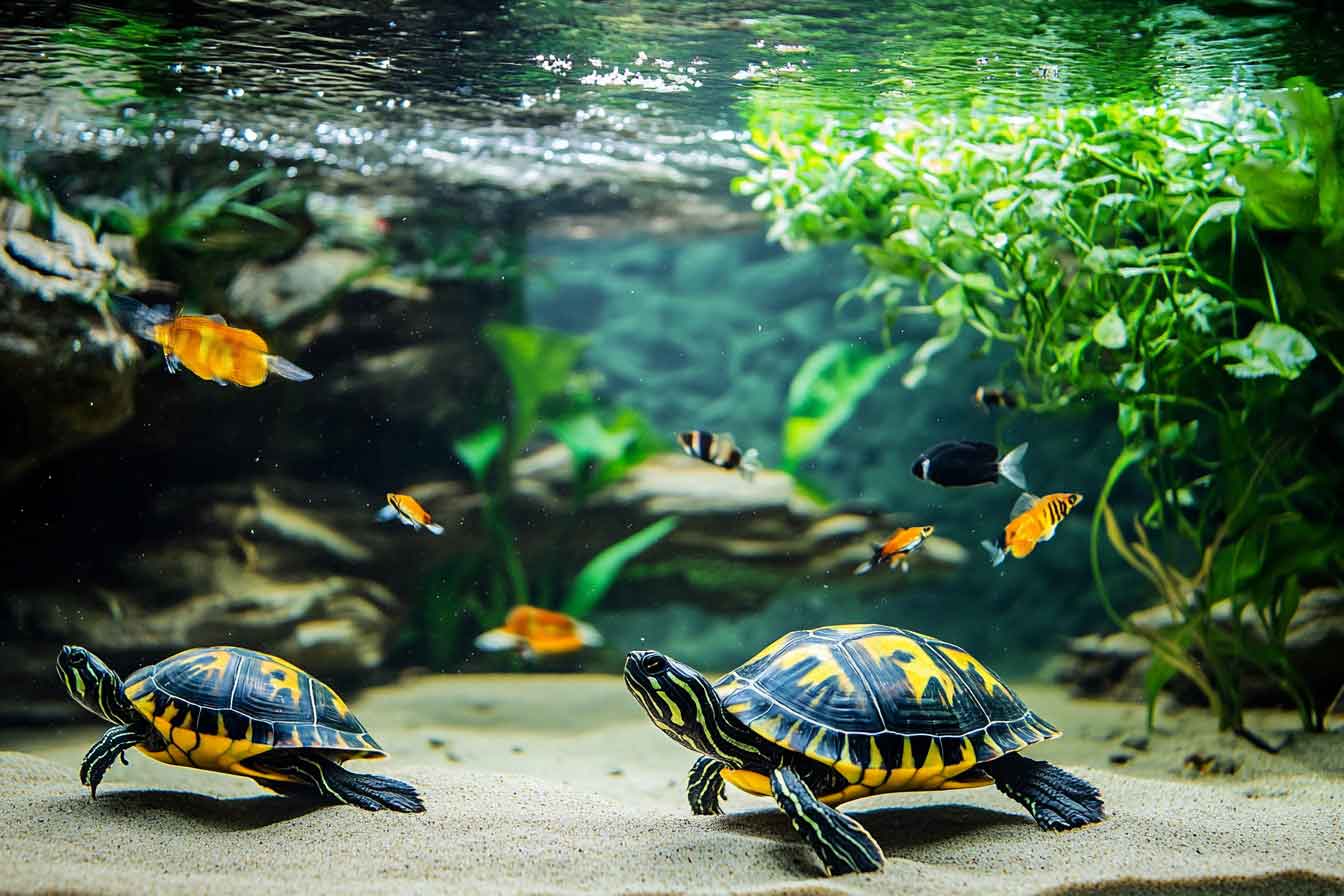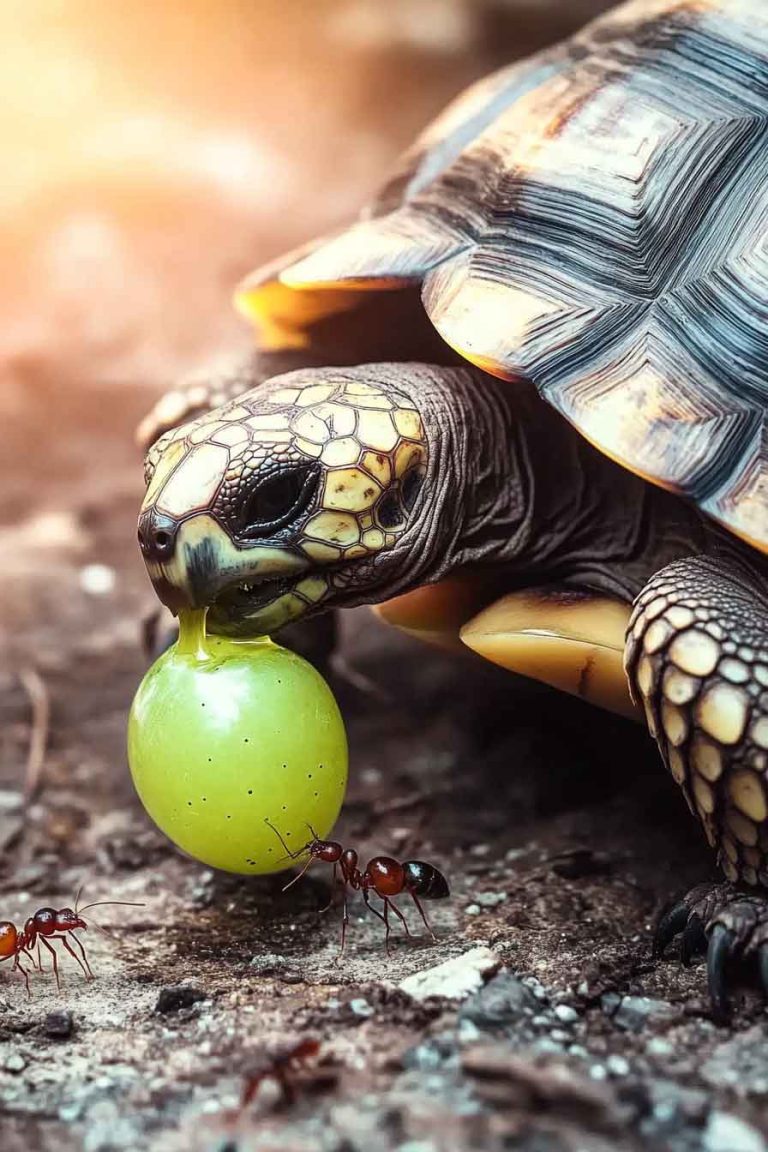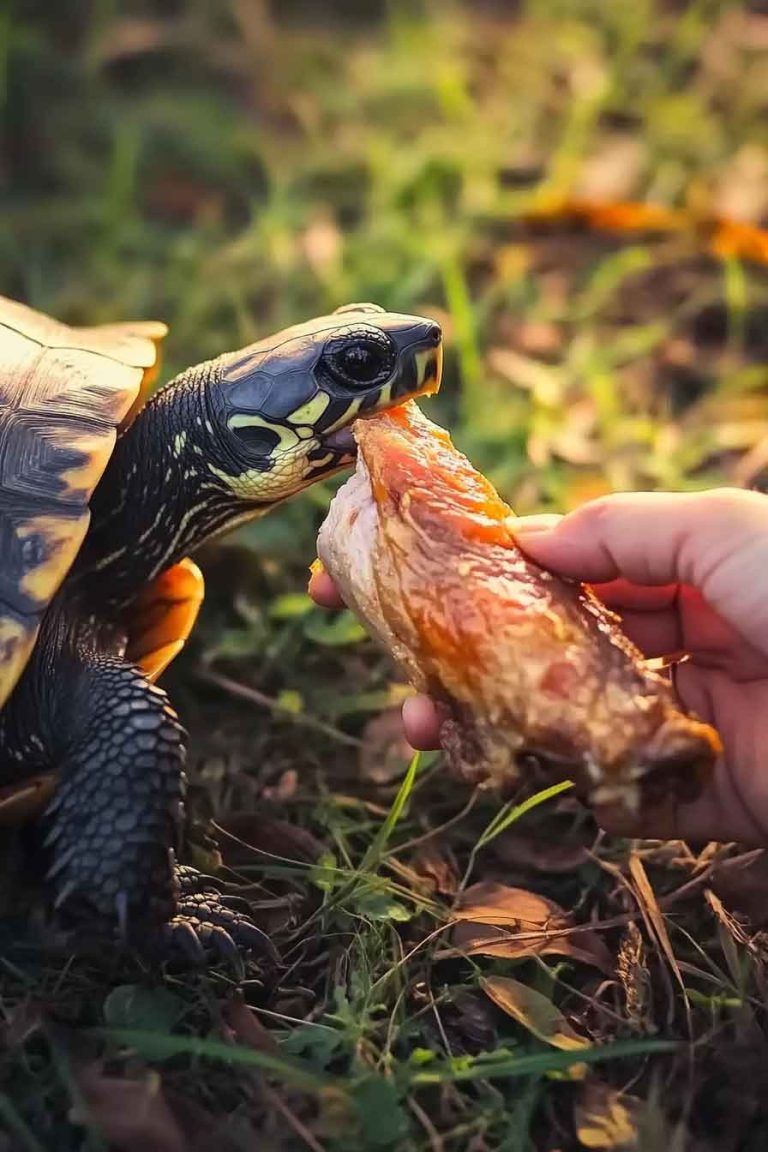Feeder Fish For Turtles: What Every Turtle Owner Must Know
If you’re a turtle owner like me, you’ve probably wondered about feeding live feeder fish to your shelled companion. It seems natural – after all, wild turtles catch and eat fish all the time. But when I first considered adding feeder fish to my turtle’s diet, I had so many questions about safety, nutrition, and…
If you’re a turtle owner like me, you’ve probably wondered about feeding live feeder fish to your shelled companion. It seems natural – after all, wild turtles catch and eat fish all the time. But when I first considered adding feeder fish to my turtle’s diet, I had so many questions about safety, nutrition, and whether it was actually a good idea.
So, are feeder fish safe for turtles? The answer is complicated – while turtles can eat feeder fish, they come with significant risks that you need to understand before making them part of your turtle’s diet. Feeder fish can carry diseases, parasites, and nutritional imbalances that may harm your turtle’s health.
In this comprehensive guide, I’ll share everything I’ve learned about feeder fish for turtles, including the risks, benefits, and safer alternatives that I’ve discovered through research and experience.
Can You Feed Feeder Fish To Your Pet Turtle?
The short answer is – yes, but with major precautions. Many turtle species are naturally omnivorous or carnivorous and would eat fish in the wild. However, commercially raised feeder fish present unique challenges that wild-caught prey doesn’t have.
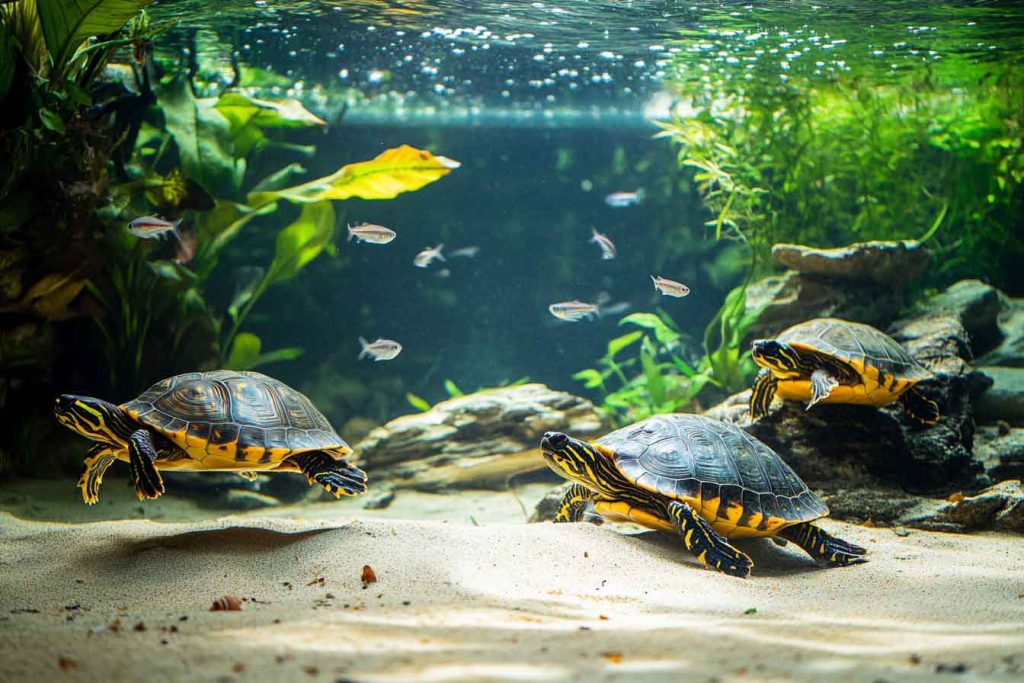
When I first started researching this topic, I was surprised to learn that feeder fish are often raised in overcrowded conditions with minimal health monitoring. This creates a perfect storm for disease transmission and nutritional deficiencies.
Let me break down what’s typically found in common feeder fish like goldfish and guppies:
Goldfish (per 100g):
- Protein: 17.6 g
- Fat: 2.1 g
- Calcium: 54 mg
- Phosphorus: 204 mg
- Thiamine (B1): 0.05 mg
- Riboflavin (B2): 0.1 mg
Guppies (per 100g):
- Protein: 18.2 g
- Fat: 1.8 g
- Calcium: 89 mg
- Phosphorus: 156 mg
Looking at these numbers, you can see a concerning pattern – the calcium to phosphorus ratio is heavily skewed toward phosphorus. This creates the same problematic ratio I discussed in my previous article about onions, where improper mineral ratios can lead to serious health issues.
Do Turtles Like Feeder Fish?
Most turtles absolutely love feeder fish! The movement triggers their hunting instincts, and the taste appeals to their carnivorous side. I’ve watched my own turtle become incredibly animated when I’ve introduced live fish – it’s fascinating to see their natural behaviors emerge.
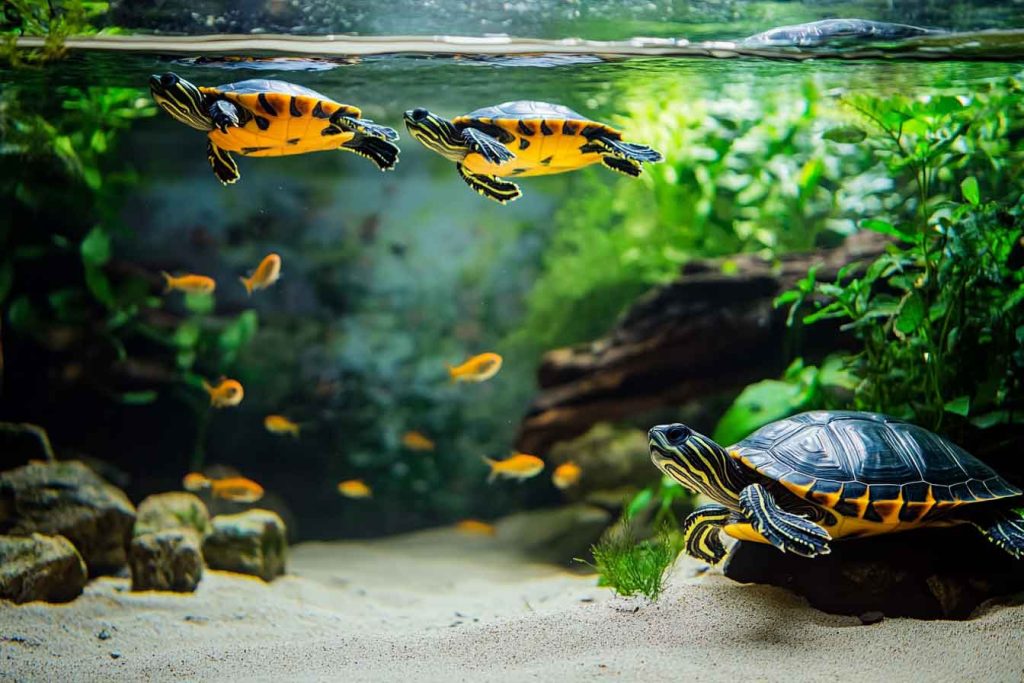
However, just because turtles enjoy something doesn’t mean it’s good for them. Think of it like candy for kids – they love it, but that doesn’t make it healthy.
Health Risks of Feeding Feeder Fish to Turtles
Through my research and conversations with reptile veterinarians, I’ve identified several serious health risks associated with feeder fish:
Disease Transmission
Feeder fish are notorious carriers of various diseases and parasites. The cramped, unsanitary conditions in many feeder fish facilities create breeding grounds for:
- Bacterial infections
- Parasitic worms
- Fungal infections
- Viral diseases
These pathogens can transfer to your turtle and cause serious illness. I’ve heard heartbreaking stories from fellow turtle owners who lost their pets to infections traced back to contaminated feeder fish.
Nutritional Imbalances
The calcium-phosphorus ratio in most feeder fish is completely wrong for turtles. As I mentioned earlier, turtles need approximately a 2:1 calcium to phosphorus ratio. Feeder fish often provide a 1:3 or worse ratio, which can lead to:
- Metabolic Bone Disease
- Shell softening and deformities
- Weakened bones
- Growth problems in young turtles
Thiaminase Problems
Many feeder fish contain an enzyme called thiaminase, which breaks down thiamine (Vitamin B1). Regular consumption of these fish can lead to thiamine deficiency in turtles, causing:
- Neurological problems
- Loss of appetite
- Lethargy
- Seizures in severe cases
Fatty Liver Disease
Goldfish, in particular, are quite fatty. While turtles need some fat in their diet, too much can lead to fatty liver disease, especially in captive turtles who don’t get as much exercise as their wild counterparts.
How Often Should Turtles Eat Feeder Fish?
Based on my research and veterinary advice, if you choose to feed feeder fish to your turtle, it should be an occasional treat rather than a staple food. I recommend:
- Adult turtles: No more than once every 2-3 weeks
- Juvenile turtles: Even less frequently, perhaps once a month
- Baby turtles: I strongly advise against feeder fish for babies
Even then, I always recommend treating any feeder fish before offering them to reduce disease risk.
Can You Feed Feeder Fish to Baby Turtles?
I strongly advise against feeding feeder fish to baby turtles. Their immune systems are still developing, making them more susceptible to diseases and parasites. Additionally, baby turtles have very specific nutritional needs for proper growth and development.
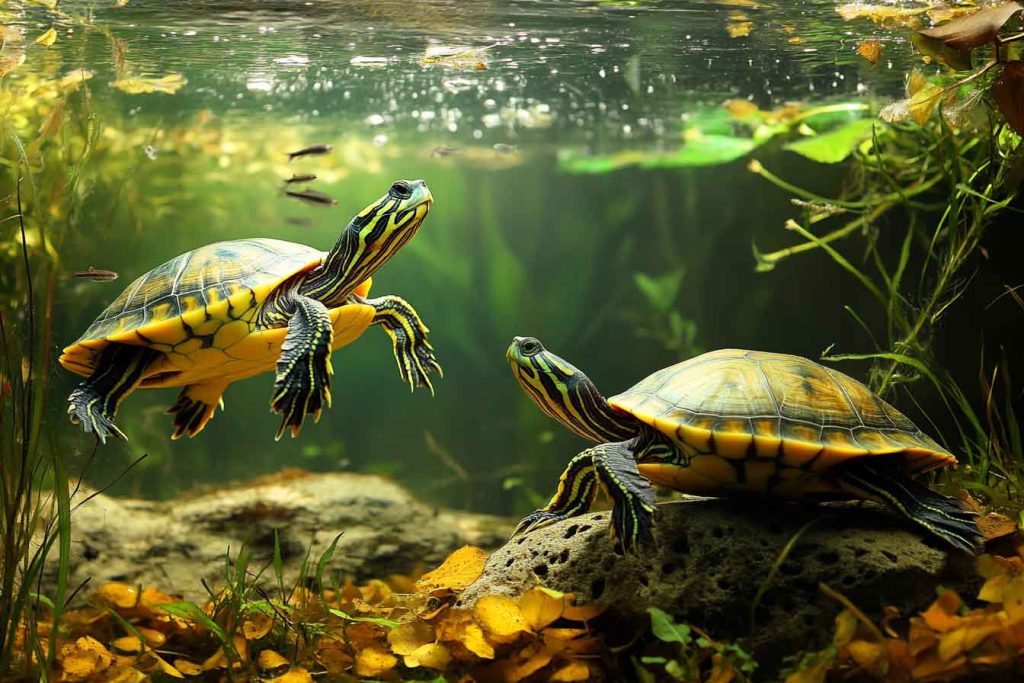
The risks simply outweigh any potential benefits for young turtles. Stick to commercial turtle foods designed specifically for juveniles.
Safer Alternatives to Feeder Fish
Through my experience, I’ve found several safer alternatives that can satisfy your turtle’s desire for variety:
Frozen/Thawed Fish
Freezing kills many parasites and bacteria. Options include:
- Frozen silversides
- Frozen smelt
- Frozen sardines (unsalted)
Commercial Fish Foods
High-quality frozen or freeze-dried fish foods designed for reptiles are much safer and nutritionally balanced.
Other Protein Sources
- Earthworms (from pesticide-free sources)
- Crickets
- Dubia roaches
- Snails (commercially raised)
Pre-treated Feeder Fish
Some reptile stores offer pre-treated feeder fish that have been quarantined and treated for common parasites and diseases.
How to Safely Prepare Feeder Fish (If You Choose to Use Them)
If you decide to feed feeder fish despite the risks, here’s my recommended protocol:
- Quarantine new fish for at least 2-4 weeks
- Treat with anti-parasitic medication (consult a vet)
- Feed the fish a nutritious diet during quarantine to improve their nutritional value
- Gut-load with calcium-rich foods 24-48 hours before feeding
- Remove uneaten fish quickly to prevent water quality issues
Species-Specific Considerations
Can Box Turtles Eat Feeder Fish?
Box turtles are more omnivorous and less aquatic than many turtle species. While they can eat fish, it shouldn’t be a major part of their diet. The same risks apply, and their terrestrial nature means they’re less adapted to a fish-heavy diet.
Can Red-Eared Slider Turtles Eat Feeder Fish?
Red-eared sliders are semi-aquatic and do eat fish in the wild. However, they still face all the same risks from commercial feeder fish. If you have a red-eared slider, focus on a varied diet with commercial pellets as the base.
Can Painted Turtles Eat Feeder Fish?
Painted turtles are also semi-aquatic omnivores. While they might enjoy feeder fish, the health risks remain the same. I recommend sticking to safer protein sources for painted turtles.
My Personal Experience and Recommendations
After extensive research and talking with reptile veterinarians, I’ve decided that the risks of feeder fish generally outweigh the benefits for most pet turtles. Instead, I focus on:
- High-quality commercial turtle pellets as the dietary foundation
- Varied vegetables appropriate for my turtle’s species
- Safe protein treats like earthworms or commercially prepared fish foods
- Occasional frozen fish that’s been properly prepared
This approach gives my turtle variety and nutrition without the significant health risks associated with live feeder fish.
Frequently Asked Questions (FAQs)
Are Comet Goldfish Safe for Turtles?
Comet goldfish carry the same risks as other feeder goldfish – disease transmission, poor calcium-phosphorus ratios, and thiaminase content. I don’t recommend them as regular turtle food.
Can Turtles Eat Guppies?
Guppies are slightly better than goldfish nutritionally but still carry disease risks. If you choose to use them, follow the quarantine and treatment protocols I outlined above.
What About Wild-Caught Fish?
Wild-caught fish might seem safer, but they can carry different parasites and diseases. Plus, there are legal and environmental considerations. Stick to commercially available options.
How Do I Know if My Turtle is Getting Proper Nutrition?
Regular veterinary check-ups are essential. Look for signs of healthy growth, strong shell development, and active behavior. Any changes in appetite, activity, or appearance should prompt a vet visit.
Conclusion
Feeder fish might seem like a natural choice for turtle food, but the reality is more complex. While turtles can eat them, the health risks – including disease transmission, nutritional imbalances, and thiaminase problems – make them a poor choice for regular feeding.
As a responsible turtle owner, I encourage you to focus on safer, more nutritionally appropriate foods. Your turtle can live a long, healthy life without ever eating a feeder fish. There are plenty of other ways to provide variety and enrichment in their diet.
If you do choose to use feeder fish occasionally, please follow proper quarantine and treatment protocols. Your turtle’s health and longevity are worth the extra effort to provide safe, nutritious food options.

